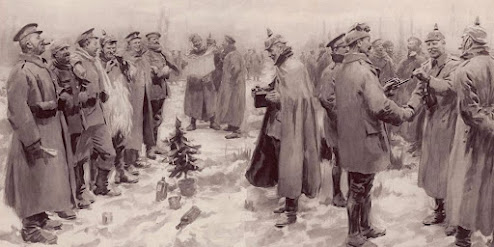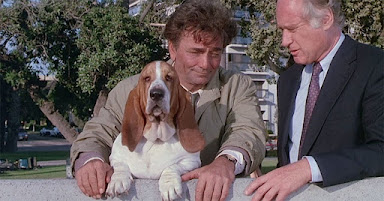by George Haloulakos
Baby Boomers (i.e., those born between 1946 to 1964) from all parts of our nation and all walks or stations in life have a remarkable degree of similarity of shared experiences associated with childhood and/or coming of age. This is not mere nostalgia but rather a reflection of a confluence of several major factors or variables that profoundly shaped the lives of those born in the aforementioned period. In 2015, Robert D. Putnam published a book titled Our Kids: The American Dream in Crisis. As the Baby Boomer generation transitions into retirement, this is a very important read that enables one to understand the uniqueness of shared experiences that may seem quaint or outdated but are of vital importance in understanding where we have been, where we are now and where we may have gone off the rails.
A good many GNN followers are familiar with such childhood reminiscences as playing ball in the streets as well as the front and back yards in the neighborhood, riding bikes everywhere, staying out all day in summertime and not checking in with parents until dinnertime, drinking water out of a garden hose, and so forth. There were no "play dates" or "gated communities." People knew their neighbors along with their children. Factory workers, shop keepers, office workers, local government officials, teachers, public servants such as police officers, firefighters and so forth all lived on the same block. On the same block residents included high-income earners as well as those of more modest means. The only outward signs of wealth were either an extra car in the driveway, recreational vehicles (e.g., camper or speedboat), being the first in the neighborhood to have a color TV set or perhaps a swimming pool. Less visible but also significant signs of affluence were having a cabin or weekend getaway locale and perhaps a country club membership. All children, regardless of their economic status, attended the same schools and participated in the same extra curricular activities. Kids from all backgrounds found a relatively level playing field in the classroom as well as in the context of extra curricular activities (artistic or athletic).
Mr. Putnam's book, Our Kids, is a real page turner as he demonstrates the similarity of childhood experiences across different regions of the USA in which neighborhoods were far more representative of the population at large than today. Our Kids, does not so much as provide ready-made answers as it does in asking the right questions that helps to explain the way we were! It would seem that the key factors accounting for the unique shared experiences we find relatable as baby boomers is the confluence of economics (specifically a deeper, more well established manufacturing base greatly augmented by the 1960s Space Age), parenting and/or mentoring, family structure and supportive institutions (e.g., churches, schools, parks & recreation, libraries). While there are supporting statistics to document the author's observations, the book really shines when it focuses on the poignant real-life stories of people who grew up as baby boomers and those that followed.
As I read Our Kids, I was reminded about the importance of parenting as well as economics, especially in relation to education. In the greater Los Angeles area, for example, the difference in cost for a college education (think USC vs UCLA as a microcosm of private vs public institutions) was not so much a consequence of where your parents were on the economic ladder, but rather how the economy of that period provided greater choices for one and all. In my own experience, the kids who ended up attending USC rather than UCLA had more to do with how parents prioritized their personal spending, especially if you were a first-generation American (i.e., child of immigrant parents). Those parents chose to forgo having the latest model car or other amenities, did not own a weekend get-away residence, did not belong to the country club and often lived in a more modest, less ostentatious home in order for their children to pursue higher education. Those kids who were on scholarship (including athletics or sports) either at private or public institutions had parents who were more interested in what went on in the classroom than on the ball field.
A good example was UCLA's Gary Beban (whose parents were of Croatian and Italian heritage), the university's only Heisman Trophy Winner (1967) who noted in multiple interviews that his mother and father ALWAYS expressed interest in how he was progressing with his studies but cared less about his athletic exploits (though taking pride he excelled at both by also achieving status as an Academic All-American to accompany his Heisman Trophy). Mr Beban, who graduated on time with a Bachelor's degree in European History, himself stated he was at UCLA for the scholarship and to pursue higher education.
Mr Beban's experience reminds many of us that we were greatly blessed to have grown up in a two-parent household in which a stay-at-home mom complemented the father who worked full time to provide for the family. There were teachers who went the extra mile in offering tutoring or special tips to how parents could work with their kids on improving their basic skills in reading, writing and mathematics so they would not be left behind. Clearly it was a very different time and place in our nation's history. I could go on, but you get the idea of the subtle but critical interplay of economics, parenting/mentoring, family structure and supportive institutions that has shaped the common experiences we recall as baby boomers.
Our Kids, by Robert D. Putnam, is clearly an important book and worth sharing with others to document that our shared memories are not the by-product of nostalgia but very real and life affirming.
Have any of you read this book, and if so, what are your impressions? What special experiences did you have that perhaps may not be relatable to the present generation but help to define who you are? Please share your thoughts by posting to the Galaxy FACEBOOK page @galaxynostalgianetwork, (and please remember to "like" us when doing so) or via e-mail to the GNN web site.
If you would like, please connect with me via LinkedIn (where my active following is now 1,100+ and steadily growing). View my profile at: https://www.linkedin.com/in/rev-protodn-george-haloulakos-cfa-bab6b43



























